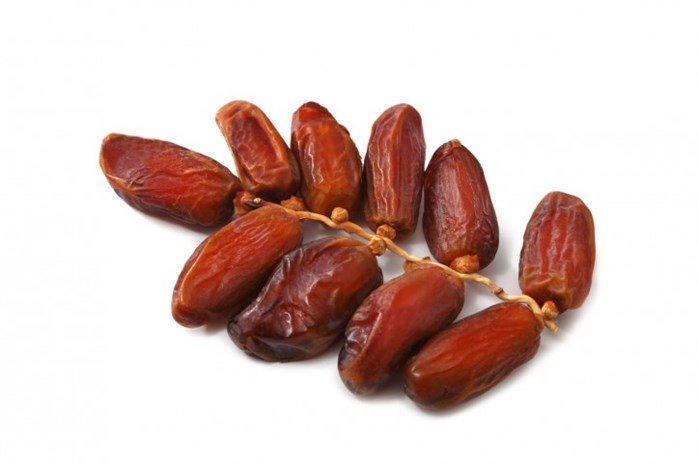
The Impact of Ripeness Stages on Kurma Tangkai’s Taste and Texture
Exploring the Different Stages of Ripeness for Kurma Tangkai
Stage 1: Khalal
The Khalal stage is the initial phase of ripeness for Kurma tangkai. During this stage, the dates are firm and have a vibrant green color. They are typically crisp and have a high water content, with a mild sweetness and a hint of astringency. Many people enjoy the unique crunch and refreshing taste of Khalal dates.
Stage 2: Rutab
As the dates progress to the Rutab stage, they undergo significant transformations. The color changes from green to an amber or golden hue, and the texture becomes softer and more moist. Rutab dates are characterized by their lusciousness and juiciness, with a richer sweetness and a creamy consistency. These dates are highly sought after for their delectable taste.
Stage 3: Tamar
At the Tamar stage, the Kurma tangkai dates reach full maturity. They display a deep brown color and have a softer texture, similar to a dried fruit. Tamar dates are known for their intense sweetness, with complex flavor profiles that can include notes of caramel, honey, and even hints of spice. They are prized for their versatility in culinary applications and are often enjoyed as a natural sweetener or a snack.
The Impact of Ripeness on Taste and Texture
The ripeness stages of Kurma tangkai have a significant impact on their taste and texture:
– Ripeness Stage:
– Khalal
– Taste: Mild sweetness, slight astringency
– Texture: Firm and crisp
– Rutab
– Taste: Richer sweetness, creamy
– Texture: Softer and moist
– Tamar
– Taste: Intense sweetness, complex flavors
– Texture: Soft and dried fruit-like
As the dates progress from Khalal to Rutab and finally to Tamar, the flavors intensify, and the texture becomes progressively softer and more chewy. This allows for a delightful sensory experience, with each stage offering a unique combination of taste and texture.
Harvesting Kurma Tangkai
The process of harvesting Kurma tangkai involves several important steps to ensure the dates are harvested at the right time for optimal ripeness:
Monitoring Maturation:
Farmers carefully monitor the dates as they progress through the ripening stages. They observe factors such as color, texture, and taste to determine the appropriate time for harvesting.
Selective Harvesting:
Harvesting is usually done selectively, where only the ripest dates are picked from the palm trees. This ensures that each date is at its peak of flavor and texture.
Using Ladders and Pole Hooks:
To reach the tall palm trees, farmers use ladders and pole hooks to safely harvest the dates. This process requires skill and precision to avoid damaging the dates or the tree.
Gentle Handling:
During harvesting, it is crucial to handle the dates with care to prevent bruising or other damage. Gentle handling helps maintain the quality of the dates and preserves their taste and texture.
Storing Kurma Tangkai
Proper storage is essential to maintain the optimal ripeness and quality of Kurma tangkai. Here are some best practices for storing dates:
Drying:
After harvesting, dates are typically air-dried to reduce their moisture content. This drying process helps enhance their flavor, sweetness, and texture.
Temperature and Humidity Control:
Dates should be stored in a cool and dry environment to prevent moisture absorption and the growth of mold or bacteria. The ideal temperature for storing dates is around 10-15°C (50-59°F) with a humidity level of 60-70%.
Airtight Containers:
Using airtight containers or packaging helps protect dates from exposure to air and moisture. This preserves their freshness and prevents them from drying out or becoming overly soft.
Avoiding Odor Contamination:
Dates can absorb odors easily, so it’s important to store them away from strong-smelling substances. Keep them in a separate storage area to maintain their natural aroma and taste.
Regular Inspection:
Periodically check stored dates for any signs of spoilage or deterioration. Remove any damaged or spoiled dates to prevent them from affecting the overall quality of the batch.
Key Highlights:
– Harvesting Kurma Tangkai:
– Monitoring maturation stages.
– Selective harvesting of ripe dates.
– Using ladders and pole hooks for safe picking.
– Gentle handling to avoid damage.
– Storing Kurma Tangkai:
– Air-drying to enhance flavor and texture.
– Temperature and humidity control (10-15°C, 60-70% humidity).
– Airtight containers to prevent moisture and air exposure.
– Avoiding odor contamination.
– Regular inspection for spoilage.
Conclusion:
Understanding the different stages of ripeness for Kurma tangkai allows us to appreciate the nuances of taste and texture that each stage brings. From the crispness of Khalal to the creaminess of Rutab and the richness of Tamar, these dates offer a diverse and satisfying culinary experience. Whether enjoyed as a healthy snack, used in desserts, or added to savory dishes, Kurma tangkai is a delightful treat that showcases the beauty of nature’s ripening process.